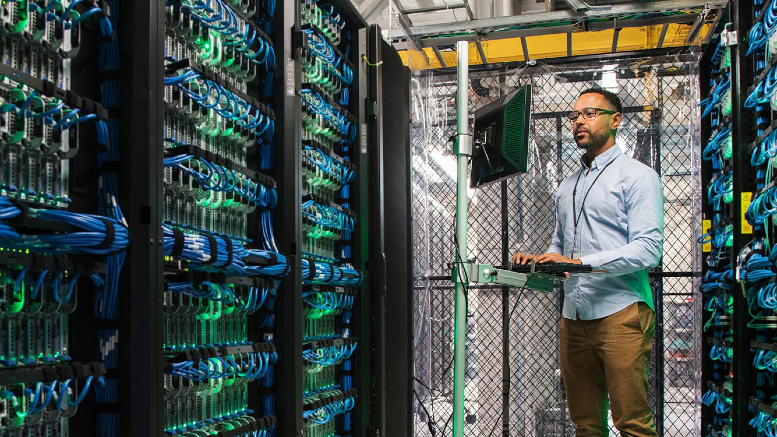Short on time? Read the key takeaways:
- Containers provide efficiency and optimization for IT operations by allowing for a shared operating system layer and interchangeable building blocks.
- Organizations should consider using serverless technology, which allows for on-demand computing and can optimize IT spending.
- Security should be a key consideration when embracing containers and serverless technology, as it requires a shift to addressing security earlier in the development lifecycle.
- Organizations must transform their workforce to acquire digital and cloud-native skills and adopt more of a DevSecOps stance to address new requirements.
The rise of containers and serverless computing has some folks asking if the time of the virtual machine (VM) is over.
Of course, we haven’t reached the end of the VM era, but we have seen accelerated cloud adoption since the beginning of the COVID-19 pandemic. This acceleration is moving the needle on containers and serverless computing and enabling organizations to optimize further—just as the adoption of virtualization did. With the increased adoption of cloud-based Platform as a Service and Software as a Service offerings, responsibility for the Infrastructure as a Service layer, which includes VMs, will continue to shift to cloud service providers.
Gartner predicts that 90% of global organizations will be running containerized applications in production by 2026—up from 40% in 2021. In addition, 20% of all enterprise applications are expected to run in containers by 2026—up from fewer than 10% in 2020.
The cloud, containers and serverless technology provide great value. However, they also require that organizations think and act in new ways. This article explores containers and discusses three tips to help your organization make the most of these technologies.
What are containers?
Containers provide efficiency and optimization for IT operations. Every VM is packaged with an operating system (OS) layer. With containers, you have a shared OS layer abstracted by the container engine, enabling you to use containers like interchangeable building blocks.
Container technology offers several benefits, which organizations need to understand to make the most of the technology. Containers:
- Enable innovation by accelerating application development, so organizations can rethink their services and quickly bring new capabilities to market
- Support an agile DevOps approach, enabling software to be delivered 200 times more frequently
- Offer the promise of building once and deploying anywhere
Tip #1: Ask if you need compute running all the time
Serverless technology works like an API call. It lets you invoke functions without running your container or VM. For example, if you have a data ingest functionality that picks up data once every few hours, you don’t have to run that service 24/7 to ingest data for a few seconds. Instead, you can use serverless technology on demand for that job.
This is a great way to optimize your IT spending. This is possible because cloud providers now offer serverless functionality. Serverless technologies are often supported as stateless containers launched on demand in the back end, and the cloud provider fully manages their lifecycle, enabling greater operational efficiencies.
This represents a massive rethink in computing. Ask yourself whether you need compute running all the time. If the answer is no, you can employ serverless technology anytime on demand. The serverless approach requires zero infrastructure management and offers agility and scalability. Companies, including Netflix, have adopted it to deliver highly available services to millions of customers.
Tip #2: Underpin container and serverless efforts with security
Cyberattacks have increased in recent months. When adopting containers and serverless technology, ensure your efforts are underpinned with security—and keep in mind that securing these new technologies requires a new approach.
People are comfortable with approaches such as antivirus, patching and endpoint protection for securing VMs. With containers, you must shift to address security earlier in the development lifecycle.
Securing containers involves more than scanning the contents of a container. It requires integrating and automating security checks along the development cycle from start to finish. In this way, container security is mandating and partly enabling DevSecOps as the next evolution of continuous integration/continuous delivery pipelines for enterprise software development.
Securing serverless technology is like securing APIs. It would be best if you protected against threats, including malicious parameter data, identity attacks and attacks on unprotected data transfers. In addition, you need to ensure that hackers can’t inject serverless functions with harmful data, stage denial-of-service attacks or mine for private data.
Also, address identity and access management as part of your container and serverless strategies. If those are your endpoints, you need to ensure they’re secure. Assume you’re using serverless technology to ingest and retrieve some secure data. You want to restrict access to that data by creating role-based access. Unfortunately, people sometimes forget about this critical aspect of security.
Tip #3: Consider the human element
It took time and effort for people to get comfortable with the move from physical servers to VMs and use VMs. However, initial concerns about the overhead of a hypervisor and resource contention by multiple workloads have been largely mitigated.
Containers and serverless technology require an even more significant cultural shift. That changes the skills you need for IT operations. Now, you don’t need resources for VM management tasks like patching. As you adopt containers and serverless technology, transform your workforce at the same time to acquire digital and cloud-native skills and adopt more of a DevSecOps stance to address new requirements.
Propel your cloud journey with containers
The cloud has helped organizations meet the challenge of today’s world to expedite business transformation and become more agile, competitive and resilient. Adopting containers and serverless technologies as part of your cloud transformation journey can help you go even faster, bringing business services to market more quickly with a lower total cost of ownership.
It’s a whole new world.
Explore how you can transform your cloud strategy with containers and serverless technology.
Learn more
Download PDF



















